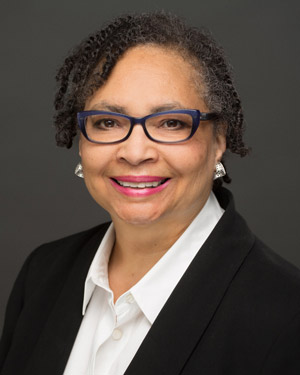At Campbell & Company, our Executive Search team is naturally in tune with the needs of and the challenges facing Chief Development Officers (CDOs). To benefit organizations and the CDOs they employ, we have conducted research to understand the causes of short CDO tenures. We’ve also learned from our real-world experiences working with candidates and organizations nationwide and shared our expertise in professional development webinars and conference presentations.
Recently, in many of the conversations we have with CDOs across the country, a number have indicated a strong interest in becoming organizational leaders. We have explored this path from CDO to CEO, partnering with Patti Tuomey, President of Josephinum Academy, to host a webinar and present at the AFP International Fundraising Conference. Our team conducted the search that resulted in Patti’s appointment to her current position, and she has a unique, rich perspective on CDO-CEO dynamics due to her career path.
With a background in arts administration, Patti’s first CDO experience was as Director of Development at the School of the Art Institute of Chicago (SAIC). She moved on to another CDO role as Director of Communications and Integrated Strategies at The Field Museum in Chicago, where managing fundraising was a part of her responsibilities. Next, she became COO of the Pulmonary Fibrosis Foundation, also in Chicago, and was later promoted to President and CEO before moving into her current position.
I sat down with Patti recently to discuss her perspective on the CDO-CEO relationship. For all CDOs—especially those hoping to lead an organization one day—it’s critical to develop a collaborative partnership with their CEOs. Based on Patti’s wealth of experience and my knowledge of the field, we compiled four ways CDOs can optimize this all-important relationship to excel in the present and set themselves up for future advancement.

Learn from how a CEO interacts with the community. “At SAIC and the Field Museum, I was fortunate to work for two very dynamic CEOs. They were both extremely well connected throughout the community, and our constituents really responded to how much they reached out. That was half the fundraising battle,” Patti recalls. “I learned a great deal about how important it is to stay active within your community when you lead an organization. They always made sure our institutions were top of mind. I strive to model that same involvement as CEO.”
The CDO also acts as a public face of the organization in many situations. For this reason, observing the CEO in his or her element can help the CDO mirror the CEO’s most effective messaging and strategies.
Stay in alignment with Finance and Programs. “The CDO-CEO relationship does not exist in a vacuum. Programs and Finance are partners to this relationship, and one of the biggest missteps I see is when Development, Finance, and Programs are out of sync,” Patti reports. “If the CDO is raising money for something that doesn’t align with the budget, that’s a big problem. Similarly, the CDO needs to ensure that fundraising efforts fit within the strategic plan and complement programmatic endeavors. If this isn’t happening, the CEO will be forced to step in.”
The CDO and CFO should collaborate to create monthly financial reports for the CEO and Board. A dashboard report can be particularly useful—the full senior team can share key metrics and provide a holistic view that aligns the team on next steps. This alignment enables the CDO to best represent the donors’ desires within the organization’s strategic framework. Staying involved with other areas of the organization also gives CDOs opportunities to get the diverse experience necessary to be considered a serious CEO candidate down the road.
Check in and collaborate with your CEO on a consistent basis. “As CEO, I value team members who share big ideas and also work with me to map out how we can put them in motion. As CDO, I knew I needed to set aside regular time for this sort of brainstorming and discussion of next steps,” Patti explains. “Communication is so key to this relationship, and CDOs should understand their CEOs’ communication style.”
For the health of the organization, it’s critical that the CDO and CEO meet regularly and stay in alignment. If this isn’t happening already, the CDO should be proactive and drive this collaboration. CDOs who aspire to be leaders of organizations will appreciate and rely on this kind of interaction when they become CEOs.
Brief your CEO with relevant information and manage up as necessary. “CEOs are pulled in 50 different directions at once. At the Pulmonary Fibrosis Foundation, I told my team to text me if they needed to share time-sensitive information,” Patti says. “I recommend that CDOs create briefing memos whenever their CEOs need to attend an event, meet with a donor, or make any sort of community appearance. A monthly, high-level newsletter to the Board is also important to keep everyone up-to-date between meetings, and the CDO should develop materials to prep the Board directly before meetings.”
It’s up to the CDO to ensure that the CEO and the Board have the fundraising information they need to navigate Board meetings, special programs, and day-to-day concerns. CDOs should understand that the CEO is working across the entire organization; while fundraising is a major concern for the CEO, it is not his or her only focus.
Philanthropy programs work best when they are integrated into the larger picture of the organization. A productive, optimized CDO-CEO partnership is an important aspect of this integration, helping to increase fundraising success and give the CDO a solid foundation to build on in the future.
